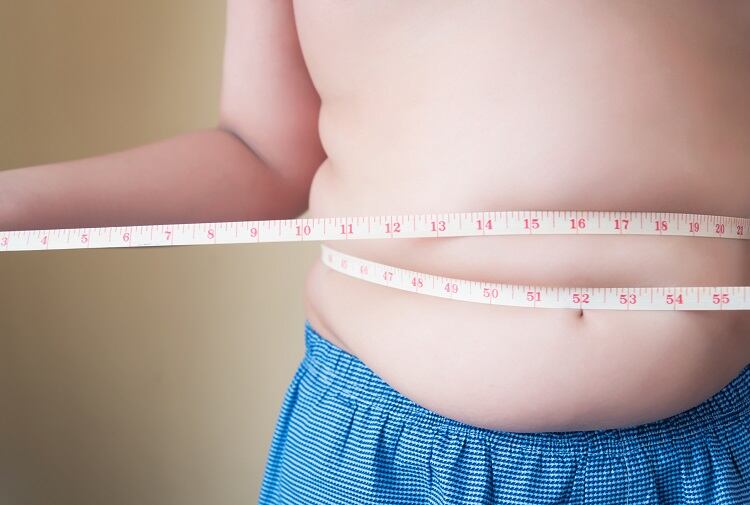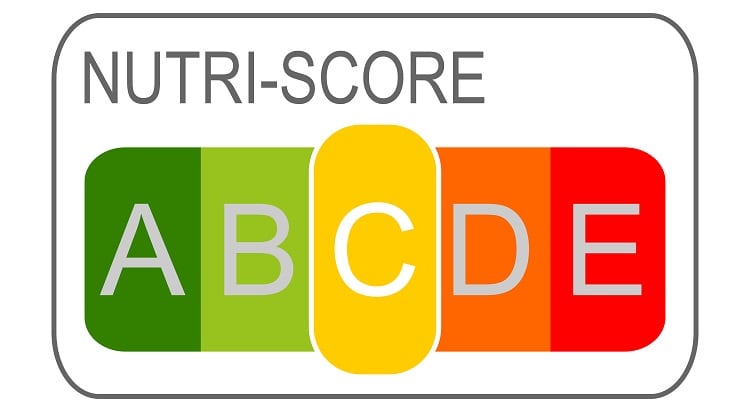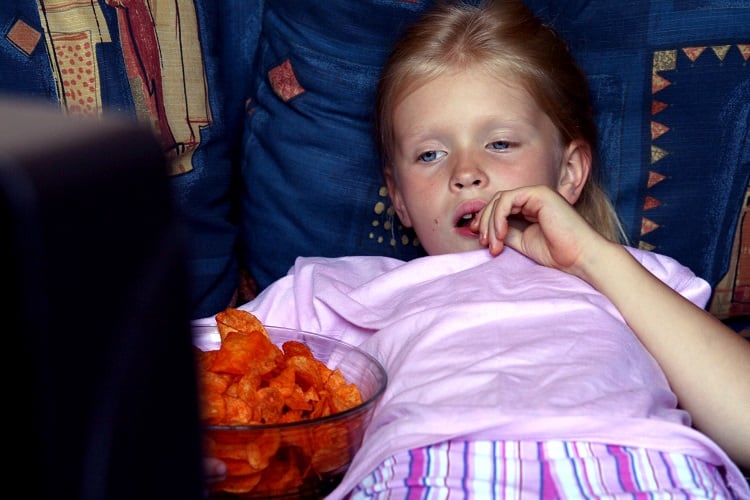The promotion of sugary drinks and unhealthy foods is monitored, to some extent, in a growing number of countries across Europe.
Under current legislation in the UK, for example, food and drink companies are banned from promoting products high in fat, sugar or salt (HFSS) on children’s television, or on any media channel, with an audience of more than 25% under-16s.
In Ireland, HFSS products cannot be advertised during TV and radio programmes where over 50% of the audience are under 18s. And in Sweden, TV advertising of HFSS products is banned during programmes appealing to children under 12.
The aim, for all countries that have implemented voluntary or mandatory policies, is to curb rising childhood obesity rates.
Yet according to fresh research out of Spain and Slovenia, even legally binding measures – as they currently stand – are not strict enough to prevent childhood obesity.
Childhood obesity: a growing problem
The World Health Organization (WHO) defines overweight and obesity as abnormal or excessive fat accumulation that may impair health.
Globally, both conditions are on the rise. Obesity has nearly tripled since 1975, and according to 2016 figures, over 340 million children and adolescents aged 5-19 were overweight or obese.
Advertising is recognised as one of the factors that contributes to an obesogenic environment. As a result, junk food bans have garnering increased attention on the international stage.
In January of this year, the World Cancer Research Fund (WCRF) publicly called on governments to restrict junk food marketing. According to the not-for-profit, advertising affects children’s eating and drinking behaviour, preferences, requests, nutrition knowledge and food intake.
Citing previous research, the WCRF noted that watching 4.4 minutes of food advertising can lead to children eating 60 additional calories a day. Eating as little as 46 extra calories each day can lead to excess weight in children, the not-for-profit continued.

The following month, the WHO-Lancet Commission proposed a global, legally binding protocol to prevent brands marketing fast foods and sugary drinks to children – which it described as ‘predatory commercial practices’.
According to the Commission, such businesses make ‘huge profits’ from marketing junk food and sugar-sweetened beverages – which are the same unhealthy food items known to be major causes of non-communicable diseases.
If the protocol were added to the UN Convention of the Rights of the Child (CRC), abiding national governments would be responsible for prohibiting businesses from targeting advertising to children within their individual countries.
Case study: Spain
In Spain, junk food consumption amongst children is of serious concern. Eighty-one percent of children drink sugar-sweetened beverages and soft drinks weekly, with the country ranking fifth amongst European countries for childhood obesity.
The nation has, similarly to the UK, Ireland, and Sweden, an advertising regulatory framework for obesity prevention: the PAOS Code.
The PAOS code is self-regulatory, and monitors junk food advertising on television aimed at children 12 years old and under, and internet advertising targeting children under-15.
The Code was first established in 2005 and improved upon in 2012. A total of 44 companies adhered to the new Code – representing around 95% of the sector’s advertising investments.

Given Spain’s elevated childhood obesity rates, and acknowledging the role that junk food advertising can play in contributing to obesogenic environments, researchers in Barcelona sought to find links between the two.
Published last month in the International Journal of Environmental Research and Public Health, the study correlated longitudinally the nutritional values of sugar-sweetened beverages (SSBs) and soft drinks (SDs) with advertising strategies between 2013 and 2018.
"The aim of this study is to find associations between advertisements for SSBs and SDs in different media (TV, leaflets, radio, Internet, etc.), the language used, and the products' low nutritional value,” noted authors Mireia Montaña from the Open University of Catalonia and Mònika Jiménez from Pompeu Fabra University.
“To do so, we selected campaigns carried out by the top 10 companies in these categories between 2013 and 2018 in Spain.”
A mixed-methods approach
The study analysed a total of 78 products that featured in 4956 advertisements across radio, internet, television, press, magazines, outdoor, and cinema.
The researchers used a ‘mixed-methods’ approach that included a quantitative analysis of advertising spend data, a content analysis and a study of the discursive strategies used in the advertisements.
The Nutri-Score system was also applied by the researchers, in order to determine the nutritional quality of the beverages.
Nutri-Score ranks foods from -15 for the ‘healthiest’ product to +40 for those that are ‘less healthy’. On the basis of this score, the product receives a letter with a corresponding colour code: from dark green (A) to dark red (F).

Advertising goals at odds with children’s health?
The results were analysed considering the PAOS strategy, to determine whether advertisers who explicitly expressed their adherence to the Code applied the regulations to the advertising language and messaging used.
According to the researchers, the main results pointed to an association between low nutritional value beverage advertisements and a discourse based on hedonistic elements.
“Results from this study show that 81% of the advertising spending for sugar-sweetened beverages SSBs and SDs in Spain goes to products of low (D) or very low nutritional quality (E).
“Despite the companies responsible for these SSBs and SDs launching healthier versions of classic drinks (e.g., light, zero, etc.) to the market (according to the Nutri-Score system), the truth is that spending continues to focus on those with the lowest nutritional values.”
Concerning language use, happiness, the ability to make friends, and standing out from the rest of the group, were among the discursive elements observed.
“Adventure, pleasure, friendship, happiness, success and fun were some of the concepts originating from the language that appeared in the advertisements showing products with a low or a very low nutritional value.
“In this sense, the language that was used in the ads had connotations of prestige and the gaining of certain abilities or greater social acceptance. The constant allusion to aspects like happiness, strength, power and victory were usually highlighted as a benefit of the beverage in most of the advertisements,” the researchers noted.
Tighter advertising regulation required
Such findings led Montaña and Jiménez to suggest that these companies’ advertising goals may be at odds with children’s health.
The language used in the Spanish advertisements of SSBs and SDs with low nutritional value ‘in no way’ helped prevent obesity among children, they noted. “In fact, the opposite way is true: they promoted good experiences and positive emotions as a purchase benefit.”
Therefore, in Spain, tighter advertising regulations are required to reduce and prevent childhood obesity, argued the researchers. The measures currently applied, they said, are ‘insufficient’.
“Almost all advertising spending on SSBs and SDs goes to products with low or non-existent nutritional values. In addition, the regulatory framework related to the advertising of food and beverages that is applied in Spain has consistent gaps, starting with the fact that the companies supporting the PAOS code, and showing an initial commitment to respecting the regulatory framework contained therein, constantly violate it in their advertising strategies.”

For Montaña and Jiménez, a greater involvement of the Spanish beverage industry – as well as advertisers and agencies – is necessary to make the self-regulation of advertising content ‘truly effective’ in the fight against childhood obesity.
Case study: Children in Slovenia fall through regulatory gaps
Fresh research examining children’s exposure to food marketing on television in Slovenia suggests similar findings.
In 2017, Slovenia adopted regulations to restrict the advertisement of unhealthy foods and beverages during designated children’s television programming.
A team of researchers in Slovenia and Australia sought to assess the impact these regulations have had on children’s exposure to food advertising – including during children’s programmes and at peak viewing times for children.
A total of 6479 food advertisements broadcast between 2016 and 2018 were analysed by the researchers. These adverts played on the five most popular television channels for kids aged 4-9 years.
Their findings were a mixed bag. “The new Slovenian food marketing regulations have reduced the advertising of unhealthy foods during children’s programmes,” the researchers noted.
“However, children’s viewership rates are also high outside of this designated programming and, as such, children’s overall exposure to unhealthy food advertising is unlikely to have been reduced considerably by the regulations.”
There, the researchers propose that future policy interventions be tighter – to cover not only children’s programmes but also broadcasting periods that include the greatest numbers of child viewers.
Source: International Journal of Environmental Research and Public Health
‘Soft Drinks and Sugar-Sweetened Beverages Advertising in Spain: Correlation between Nutritional Values and Advertising Discursive Strategies’
Published 30 March 2020
DOI: http://dx.doi.org/10.3390/ijerph17072335
Authors: Mireia Montaña Blasco and Mònika Jiménez-Morales
Source: Appetite
‘Regulating children’s exposure to food marketing on television: are the restrictions during children’s programmes enough?’
Published 6 June 2020
DOI: https://doi.org/10.1016/j.appet.2020.104752
Authors: ŽivaLavriša, Hristo Hristov, Bridget Kelly, and IgorPravst





